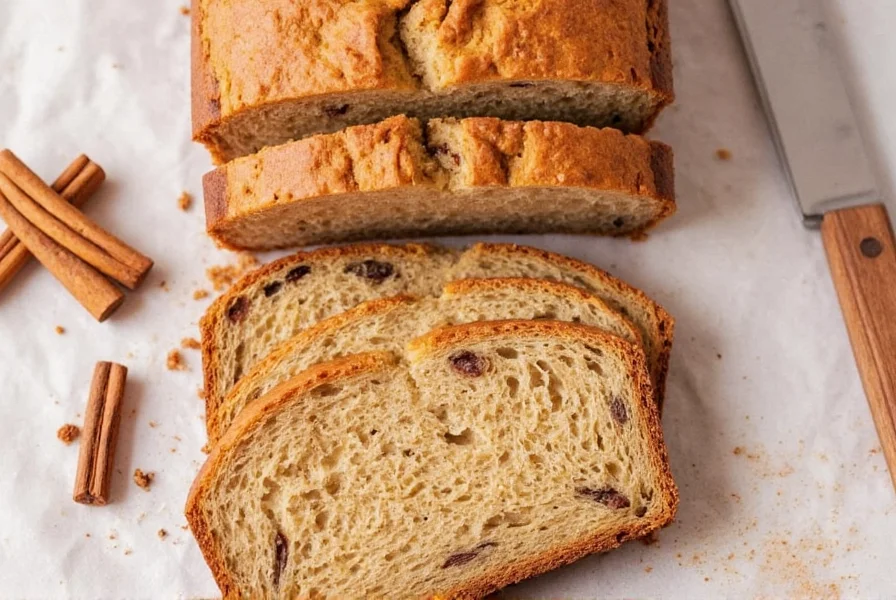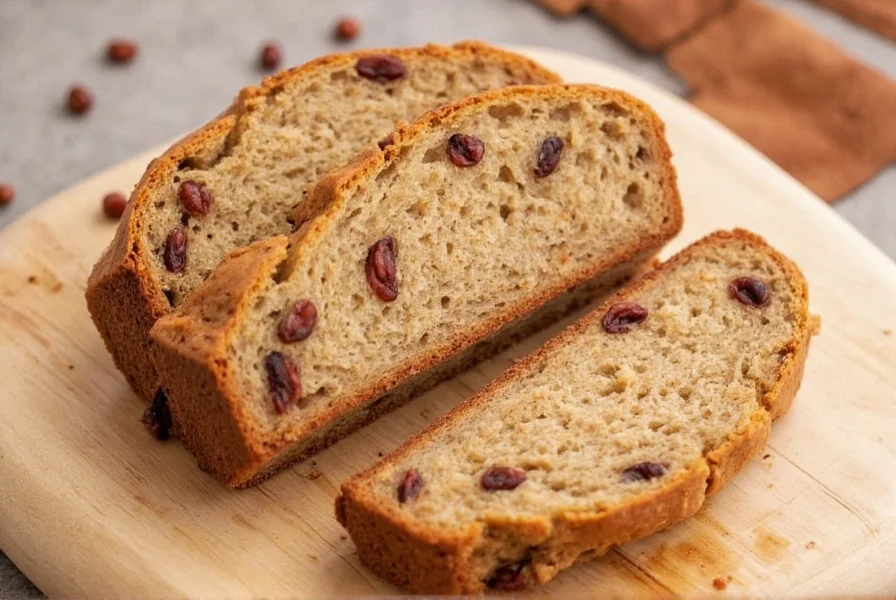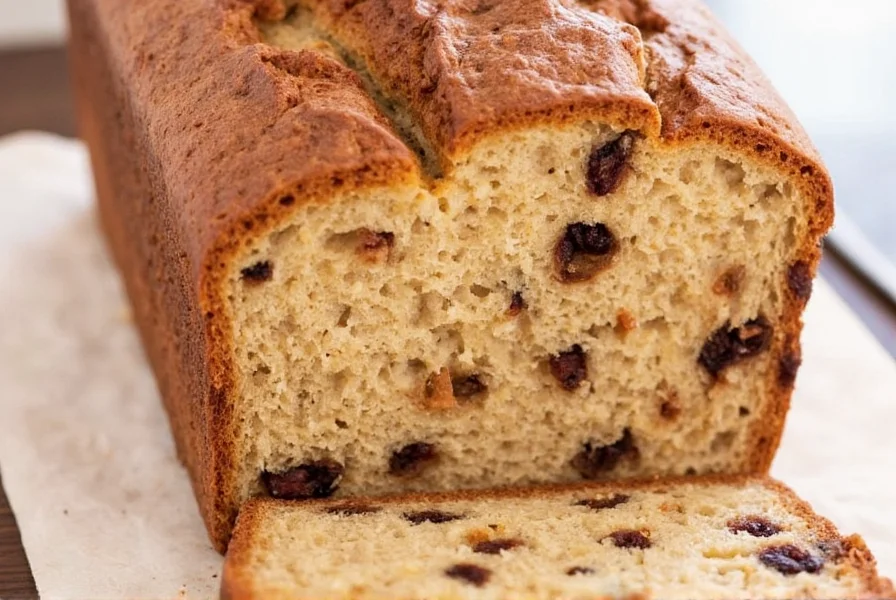Cinnamon raisin bread stands as one of the most beloved sweet bread varieties in American baking tradition. This delectable loaf combines the comforting warmth of cinnamon with the natural sweetness of plump raisins, creating a harmonious balance that appeals to both children and adults. Unlike plain bread varieties, cinnamon raisin bread serves as both a satisfying breakfast option and a delightful dessert alternative when toasted and buttered.
The Rich History Behind Cinnamon Raisin Bread
While sweet breads have existed for centuries, cinnamon raisin bread emerged as a distinct variety in mid-20th century America. European baking traditions brought sweet yeast breads to the United States, where bakers began experimenting with local ingredients. The addition of raisins—initially a luxury ingredient—became more accessible as California vineyards expanded production. Cinnamon, once a precious spice traded along ancient routes, became widely available through global trade networks. The combination proved irresistible, and by the 1950s, cinnamon raisin bread appeared regularly in American cookbooks and home kitchens.
Essential Ingredients and Their Purpose
Creating exceptional cinnamon raisin bread requires understanding each component's role. The foundation consists of:
| Ingredient | Function | Professional Tip |
|---|---|---|
| All-purpose flour | Provides structure through gluten development | Measure by weight (120g per cup) for consistent results |
| Active dry yeast | Leavens the dough for proper rise | Test viability in warm water with pinch of sugar before use |
| Raisins | Adds natural sweetness and texture | Plump in warm water or rum for 15 minutes before adding |
| Cinnamon | Creates signature warm flavor profile | Use Ceylon cinnamon for complex flavor over cassia varieties |
Many home bakers wonder about the best way to make cinnamon raisin bread without ending up with dense or unevenly distributed ingredients. The secret lies in proper dough hydration and careful folding technique. When incorporating the cinnamon sugar mixture, gently roll and fold the dough rather than aggressively kneading, which can tear the delicate layers.

Achieving Perfect Texture and Flavor Balance
The hallmark of exceptional cinnamon raisin bread is its tender crumb with distinct cinnamon swirls and evenly distributed raisins. Many commercial versions suffer from artificial flavors or uneven spice distribution. For homemade cinnamon raisin bread recipe success, consider these professional techniques:
- Temperature control: Maintain dough temperature between 75-80°F during first rise for optimal yeast activity
- Raisin preparation: Toss plumped raisins in 1 tablespoon of flour before folding into dough to prevent sinking
- Swirl technique: Spread softened butter evenly before applying cinnamon-sugar mixture for consistent flavor
- Baking precision: Use an instant-read thermometer to verify internal temperature reaches 190°F
Understanding cinnamon raisin bread nutritional information helps balance enjoyment with dietary considerations. A typical slice (1/12 of a standard loaf) contains approximately 220-250 calories, with 45g carbohydrates, 5g sugar, and 4g protein. The raisins contribute natural sugars and fiber, while the cinnamon offers potential metabolic benefits.
Popular Variations Across Different Regions
While the classic version remains popular, regional adaptations have emerged. In California, bakers often incorporate orange zest for brightness. New England versions sometimes include molasses for deeper flavor. Health-conscious adaptations might use whole wheat flour or reduce sugar content, though purists argue this compromises the essential character of perfect cinnamon raisin bread.
Optimal Serving and Storage Methods
To experience cinnamon raisin bread at its best, proper serving technique matters significantly. For immediate consumption:
- Fresh baking: Allow bread to cool completely (2 hours) before slicing to prevent gumminess
- Toast enhancement: Lightly toast slices and spread with softened butter or cream cheese
- Dessert application: Transform stale slices into bread pudding or French toast
When considering how to store cinnamon raisin bread properly, follow these guidelines:
- Room temperature: Keep in airtight container for up to 3 days
- Refrigeration: Not recommended as it accelerates staling
- Freezing: Slice before freezing for convenient single servings; thaw at room temperature

Common Challenges and Solutions
Many home bakers encounter issues with their cinnamon raisin bread variations. Here's how to address frequent problems:
- Sunken raisins: Coat raisins in flour before folding into dough
- Weak cinnamon flavor: Use freshly ground cinnamon and increase quantity by 25%
- Dense texture: Verify yeast activity and avoid over-kneading during swirl incorporation
- Burnt edges: Shield loaf with foil during final baking minutes
Mastering these techniques ensures consistently excellent results whether you're following a traditional homemade cinnamon raisin bread recipe or experimenting with your own variations. The key lies in understanding how each ingredient contributes to the final product and respecting the baking process timeline.
Frequently Asked Questions
Can I substitute dried cranberries for raisins in cinnamon raisin bread?
Yes, dried cranberries make an excellent substitute for raisins, providing a tart contrast to the sweet cinnamon. Use the same quantity but consider adding 1-2 tablespoons of additional sugar to balance the tartness. Plump cranberries in warm orange juice for enhanced flavor before incorporating into the dough.
Why does my cinnamon raisin bread collapse in the center during baking?
Center collapse typically occurs when the dough hasn't completed its final rise before baking or when the oven temperature is too high. Ensure the shaped loaf has doubled in size during proofing and verify your oven temperature with an independent thermometer. Reducing oven temperature by 25°F and extending baking time slightly often resolves this issue.
How can I make my cinnamon raisin bread more moist?
For moister cinnamon raisin bread, try these techniques: add 2 tablespoons of applesauce to the wet ingredients, replace some water with buttermilk, or include 1 tablespoon of honey in the dough. Proper storage is equally important—always cool completely before wrapping in beeswax wrap or parchment paper, then place in an airtight container at room temperature.
Can I make cinnamon raisin bread without yeast?
While traditional cinnamon raisin bread requires yeast for proper texture, you can create a quick bread version using baking powder. This variation won't have the same chewy texture but can still deliver the cinnamon-raisin flavor combination. Use 1½ teaspoons baking powder per cup of flour and expect a more cake-like consistency rather than the characteristic chew of yeast bread.











 浙公网安备
33010002000092号
浙公网安备
33010002000092号 浙B2-20120091-4
浙B2-20120091-4